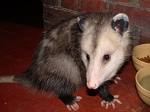Going "Green" with Your Pets
 Ed Begley first became aware of
conservation growing up in smoggy Los Angeles. By the 1970 (and
the First Earth Day) Ed decided that enough was enough and he
decided to do something about it.
Ed Begley first became aware of
conservation growing up in smoggy Los Angeles. By the 1970 (and
the First Earth Day) Ed decided that enough was enough and he
decided to do something about it.Animal Radio® Show #423 January 12, 2008
Ed Begley, Jr.
Going "Green" with
Your Pets
 Ed Begley first became aware of
conservation growing up in smoggy Los Angeles. By the 1970 (and
the First Earth Day) Ed decided that enough was enough and he
decided to do something about it.
Ed Begley first became aware of
conservation growing up in smoggy Los Angeles. By the 1970 (and
the First Earth Day) Ed decided that enough was enough and he
decided to do something about it.
He is one of those people who doesn't
just talk the talk, he walks the walk. Literally.
One of the first actions Ed took himself was to become a vegetarian.
"It just seemed like a good thing to do in 1970. But it was
so hard back then that I was only a vegetarian for about a year.
Then I started eating some fish because I couldn't find vegetarian
food when I traveled. I'd do a movie in some distant city or even
on location and they wouldn't have anything to eat," Ed explains.
"I became a vegan again in 1992." And can you believe
he actually has (and uses!) a Los Angeles bus pass! He also drives
an electric car, lives in a solar powered home and recycles everything
he can.
Ed currently has a 17-year-old dog and a 12-year-old cat. This, of course, doesn't include the feral cats that he regularly feeds. Ed traps and alters the feral cats that he can. But, trapping a feral cat can be a tough thing to do. Find out how Ed was able to trap one feline who eluded him for years!
Ed offers some great suggestions on how pet guardians can become environmentally friendly:
 Buy organic pet food
Buy organic pet food
Besides his environmental lifestyle, Ed
has also created some environmental friendly cleaning products,
"Begley's Best," for you to use in your own home. He
has created everything from an all-purpose cleaner to a carpet
spot remover. To find out where you can find these products, visit
www.begleysbest.com.
You can also catch Ed on HGTV "Living with Ed," for more points
on being "green."
Tippi Hedren
Shambala
 Animal
Radio® hosts come to you live from the Shambala Preserve in
Acton, California, where they had a chance to sit down and get
personal with Tippi Hedren, the founder.
Animal
Radio® hosts come to you live from the Shambala Preserve in
Acton, California, where they had a chance to sit down and get
personal with Tippi Hedren, the founder.
Tippi began her long love affair with wild animals in 1969 while doing a film, Satan's Harvest, in Africa. She "met" a mellow lion, and much of her life since then has been devoted to the big cats.
Her high desert animal preserve is home to the felines and pachyderms and was first established as an African-type set for the motion picture, Roar, which Tippi co-produced and starred in with her daughter, film actress Melanie Griffith. After the five-year filming was completed, it became the current, non-profit center for big cat care and research, named Shambala, which means a "meeting place of peace and harmony for all beings, animal and human."
 Currently, over seventy animals live at Shambala (Shambala.org
- The Roar Foundation), including African lions, Siberian and
Bengal tigers, leopards, servals, mountain lions, bobcats, a lynx,
a Florida panther, a snow leopard, a cheetah, and more
Currently, over seventy animals live at Shambala (Shambala.org
- The Roar Foundation), including African lions, Siberian and
Bengal tigers, leopards, servals, mountain lions, bobcats, a lynx,
a Florida panther, a snow leopard, a cheetah, and more
Tippi discusses the myth that raising a baby tiger or lion will ensure that the animal will be tame the rest of its life. Unfortunately, this is how a lot of the animals end up at Shambala.
Tippi continues to work frequently in
motion pictures, but considers her greatest success to be her
efforts on behalf of the Wild Ones of Shambala. Saving abused
and abandoned exotic animals has been her focus for more than
two decades and recently saw the Bill (Captive Wildlife Safety
Act) passed into law when signed by President George W. Bush.
http://www.Shambala.org
Pocket Pets
Marc Morrone, "The Pet
Shop
 Perhaps you didn't get your child that cat or
dog they wanted for Christmas because you felt that they were
not ready for the responsibility. Marc Morrone returns once again
to discuss pocket pets and how they make great starter pets for
children.
Perhaps you didn't get your child that cat or
dog they wanted for Christmas because you felt that they were
not ready for the responsibility. Marc Morrone returns once again
to discuss pocket pets and how they make great starter pets for
children.
Mark's first choice for children is gerbils. Because unlike Hamsters who are solitary creatures that sleep all day and are awake during the night, gerbils are actually awake during the day and sleep through the night. They also like companionship, which is great when you have two children. You can get two gerbils, a male and a female, or two same sexed gerbils from the same litter. They also need less room, and you can get away with having a 10-gallon cage for them.
Rats are also a great starter pet for children. However, they need more room, and you will need about a 20-30 gallon container. They are also very intelligent and require a little more stimulation than gerbils.
Mark states that reptiles are a little more care than gerbils and rats. They do not share our environment and will need a controlled environment with a regulated temperature. As a result, they are more fragile than gerbils and rats.
Whatever pet you decide for your child,
make sure it is something you can and want to take of because
it is more than likely the parents (actually the mother) who will
be doing all of the work!
http://www.ParrotsOfTheWorld.com
Walking with Pets to Ease Arthritis
Christopher Michaels
 When you ask yourself "how
am I going to get more physical activity," you probably don't
think of the family dog. But you should!
When you ask yourself "how
am I going to get more physical activity," you probably don't
think of the family dog. But you should!
Sarah Reeve of the California Chapter of the Arthritis Foundation says your four-footed friend can help you "walk away" joint pain and arthritis. She states "walking your dog for half an hour or even ten minutes three times a day will help to significantly to reduce pain and stiffness. In addition, the walk is good for your dog too, because dogs also suffer from arthritis. So you're really doing two good things at once."
It can be tempting to rest instead of exercise to the let the pain subside and the stiffness to go away. But, doctors say that physical activity helps.
"If you and you dog go out for regular walks, the stiffness and joint paint may actually subside. This will help both of you to decrease further deterioration of bones and cartilage while also improving your ability to perform daily activities," states Sarah.
The Arthritis Foundation hosts hundreds of pet friendly arthritis walks around the country to fight the nation's number one cause of disability arthritis.
For more information on the arthritis walk nearest you, log on to www.Arthritis.org.
The Fight to Save Tigers in a Land
of Guns, Gold & Greed
Dr. Alan Rabinowitz, Life in
the Valley of Death
Dr.
Alan Rabinowitz, the "Indiana Jones of conservation science"
is on a quest to try and save big cats. During this quest, he
has endured a small-plane crash, a subdural hematoma, a bamboo
punji stick trap stab through his left foot, a machete slash in
Borneo, countless parasites and a near collision with a mountain
in the Himalayan foothills of northern Myanmar. All of this trying
to save a species that he is highly allergic to but that
doesn't stop him!
Dr. Rabinowitz has dedicated his life to saving these animals and his work in Myanmar (formerly known as Burma) has led to the creation of the country's first marine national park, its first Himalayan national park, and a 2,500 square-mile wildlife sanctuary -- the nation's largest protected area.
Dr. Rabinowitz currently works at the Bronx Zoo, where he is the director for science and exploration for the Wildlife Conservation Society. However, he is planning on returning to Myanmar in February to further his work.
You can find out more about his life and
his quest to save the tigers in his new book, Life in the Valley
of Death.
http://www.wcs.org
NEWS UPDATE: Diamond Food Pays Millions
in Settlement
 Diamond
Pet Food, a company that allowed contaminated pet food to hit
store shelves that ultimately killed dozens of dogs nationwide,
will pay $3.1 million in a settlement with pet owners.
Diamond
Pet Food, a company that allowed contaminated pet food to hit
store shelves that ultimately killed dozens of dogs nationwide,
will pay $3.1 million in a settlement with pet owners.
Diamond Pet Food admitted that their South Carolina Plant produced pet food that contained a toxic mold, and that they never tested a shipment of tainted pet food in 2005.
They state that this mishap was not related
to the pet food recall in 2006, which contained Melamine, a toxic
chemical that was added in China.
 NEWS UPDATE Brought To You By Simple Solution
Natural Line Of Products
NEWS UPDATE Brought To You By Simple Solution
Natural Line Of Products
TOP 5 NEW YEAR'S RESOLUTIONS FOR PETS
-Hal Abrams
 Every
year we humans make a list of resolutions for the new year (which
we very rarely keep!). So, it only seems fitting that our animals
should do the same. Maybe they will be more successful than we
are!
Every
year we humans make a list of resolutions for the new year (which
we very rarely keep!). So, it only seems fitting that our animals
should do the same. Maybe they will be more successful than we
are!
Here are the Top 5 Resolutions for our pets for 2008:
5. I will not eat other animals' poop.
4. I will not lick my human's face after eating animal poop.
3. I will no longer be beholden to the sound of the can opener.
2. I will take time from my busy schedule to stop and smell the
behinds.
1. I will grow opposable thumbs; break into pantry; and decide
for myself just how much food is too much.
 Laika - Russian Rocket Dog
Laika - Russian Rocket Dog
Rae Ann Kumelos, Voice of the
Animal
Laika, a small dog from the streets of Moscow, captures-and breaks-the
hearts of the world when, in 1957, she orbits the earth in Sputnik
2.
http://www.VoiceOfTheAnimal.org
Deadly Diseases Might Come From Our
Pets!
Dr. Jim Humphries, Veterinary
News Network
 We expect our pets to give us unconditional
love and affection. But, can pets also put us in danger? From
super bacteria to deadly viruses, it may seem that our pets are
out to get us. The good news is that most of these diseases are
completely preventable!
We expect our pets to give us unconditional
love and affection. But, can pets also put us in danger? From
super bacteria to deadly viruses, it may seem that our pets are
out to get us. The good news is that most of these diseases are
completely preventable!
Recent reports of dogs harboring deadly staph bacteria as well as misconceptions about germs that can be spread by pets may prevent some families from keeping them. But how much of this is truth and how much is hype?
Any disease that can be transmitted from animals to people is considered to be a zoonotic disease. Literally, thousands of these diseases exist with several new ones found each year. But only a few are actually associated with our domestic pets. If you remove diseases that are spread by vectors, such as mosquitoes and ticks, the list you are left with would look like this:
This list may appear to be small, but among the members are some pretty serious diseases. Rabies, as is well known, is an invariably fatal disease. Vaccination protocols for our pets have reduced human rabies in the Western world, but more than 40,000 people die from rabies worldwide each year. Millions more are treated due to unknown animal bites and potential exposure. Leptospirosis, Salmonella, and the "super-bug", MRSA, are all bacterial diseases that can cause symptoms ranging from mild vomiting to kidney failure and even, rarely, death. At present, there has been no confirmed transmission of MRSA from pets to people.
More widespread are diseases caused by parasites, such as the common roundworms found in our puppies and kittens. The Centers for Disease Control (CDC) estimate that more than 10,000 people in the US test positive for roundworms annually and more than 750 will partially lose their vision. Worse yet, the raccoon roundworm is becoming more common. As humans move into formerly wooded areas and raccoons adapt to tolerate an urban lifestyle, infection with this parasite may become more likely. Unlike the more ordinary canine roundworms, raccoon roundworms have been known to cause death in humans.
But, even combined, the numbers of people in the US and Canada affected by these diseases is a small fraction compared with the number of people who are injured by their pets. Dog bites, cat scratches, and horse-related injuries are far more common. According to the CDC, more than 4 million people are bitten by dogs annually and tens of thousands of people seek medical attention because of an injury associated with riding or working with horses.
So, what can be done to minimize the chances for illness or injuries that come about from owning pets? The simplest action is to simply follow a rule common to restaurants, schools, and your mother; always wash your hands. Routine, thorough hand washing has been shown to reduce incidence of many bacterial diseases, including the dreaded MRSA. In a similar fashion, teaching your children to wash after playing with the family dog or roaming the backyard will greatly diminish any possibility of picking up a nasty parasite, like roundworms.
Spend time with and ask questions of your veterinarian. She is your best resource for understanding zoonotic diseases and how best to avoid them. Vaccine protocols have greatly decreased many zoonotic diseases and similar strategic de-worming plans may help to stop zoonotic parasites as well. She may even be able to help you and your family understand the common warning signs that often precede dog and cat bites.
Don't allow unfounded fears to dictate
your happiness with your four-legged friend. Educate yourself
and learn from the source who knows you and your pet bestyour
family veterinarian! Visit www.MyVNN.com
to watch a video giving you more tips on how to keep you and your
whole family safe from disease.
http://www.VetNewsNet.com
"Playing Possum"
Britt Savage
 They're
furry, but then they have that long weird hairless tail and a
pouch. They're opossums and they've been around since the dinosaurs.
They're
furry, but then they have that long weird hairless tail and a
pouch. They're opossums and they've been around since the dinosaurs.
They're North America's only marsupial, which means they're closer
to a kangaroo than a raccoon. And unlike raccoons and skunks,
they rarely carry rabies.
They have 50 teeth, the most teeth of any mammal, but they're
actually pretty docile and would prefer to be left alone. When
they get nervous, the "play possum" which is actually
an involuntary coma where they get all-stiff and appear dead.
Most predators leave them alone after that. And, if one gets into
your home, you can get him out pretty easily with a trail of cat
food.
Breed Specific Pet Food - Is it Really
Necessary?
Dr. Marty Becker, Good Morning
America
 When
we asked Dr. Marty Becker if breed specific food was necessary,
he stated that there are some that can be beneficial to your pet.
When
we asked Dr. Marty Becker if breed specific food was necessary,
he stated that there are some that can be beneficial to your pet.
And now, Royal Canin and Iams are making food for specific breeds of dogs and cats. At Royal Canin the details of each dog breed's unique physiology impact the formula for every one of their breed-specific diets. Not just protein, fat and nutrient levels, but kibble shape, kibble texture and more.
There are breed-specific foods for boxers, bulldogs, Chihuahuas, dachshund, German shepherds, Golden retrievers, Labrador retrievers, poodles, Shih Tzus and Yorkshire terriers.
 For example, Golden Retriever 25, launched in October
2007, supports and protects the health and longevity of adult
and mature Golden retriever dogs. Sensitive skin, a tendency to
gain weight and cardiac disease are three common problems cited
by owners. A larger, less dense kibble also encourages slower
food intake and results in greater satiety.
For example, Golden Retriever 25, launched in October
2007, supports and protects the health and longevity of adult
and mature Golden retriever dogs. Sensitive skin, a tendency to
gain weight and cardiac disease are three common problems cited
by owners. A larger, less dense kibble also encourages slower
food intake and results in greater satiety.
And let's not forget breed specific foods for cats. There is a food for Siamese cats that will actually enhance their color and a specific food for Persians that are almond shaped, making it more palatable for their pushed-in face, which also includes a hairball remedy for the longhaired cats.
Humans are the ones who decided that dogs should be feed in bowls, not dogs! Even though this next food is not breed specific, it will appeal to your dog's "inner wolf" with no bowl required.
 Rather than feeding your dog dry kibble or canned dog
food, you feed a biometrically designed, single-piece meal from
WholeMeals
Brand Food for Dogs (a bone shaped in four different sizes, that
has a chewy exterior and a dense, meaty interior) that not only
meets a dog's nutritional needs; it also addresses a dog's physiology,
instincts and enjoyment.
Rather than feeding your dog dry kibble or canned dog
food, you feed a biometrically designed, single-piece meal from
WholeMeals
Brand Food for Dogs (a bone shaped in four different sizes, that
has a chewy exterior and a dense, meaty interior) that not only
meets a dog's nutritional needs; it also addresses a dog's physiology,
instincts and enjoyment.
As an added bonus, dogs fed an exclusive
diet of WholeMeals over the course of four weeks had a 43 percent
reduction in plaque accumulation and an 83 percent reduction on
tartar buildup. Think of this as an "edible toothbrush."
http://www.PetConnection.com
Listen to the entire Podcast of this show (#423).
Listen to Animal Radio® - Go to the launch page
Return to Animal Radio Network™ Home Page
Read January Newsletter